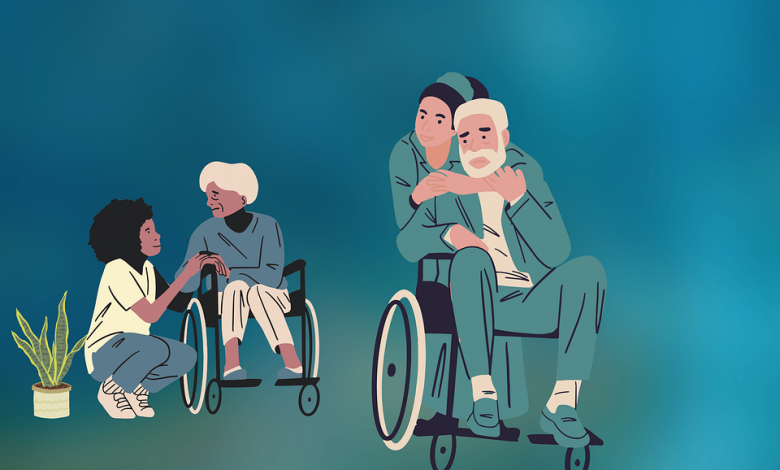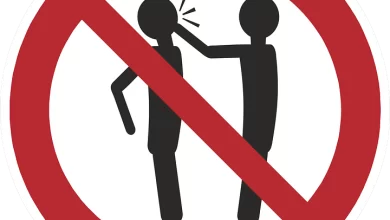How to take care of old people


by Koon Yew Yin
All, especially young people must read this article carefully so that they know how to take care of their old parents, relatives and friends.
Moreover, young people must think about how they would like to be treated when they become old.
Old people have numerous difficulties. Aging is not easy. Many who read this will likely live to become one of the very old.
Statistics from the National Council on Aging state that those 85 years and older have the highest suicide rate of any age group. It is over four times higher than the nation’s overall rate of suicide. As with most age groups, the majority of elders who kill themselves are male.
As high as those figures are, the American Association for Marriage and Family Therapy (AAMFT) suggests that the rates for elder suicide are under-reported by 40 percent or more due to what they refer to as “silent suicides.” These would include overdoses, self-imposed starvation, and dehydration, as well as accidents. The rate of suicide completion in this age group is also high due to the lethality of methods used.
Loneliness: There are many factors that might contribute to an elderly individual deciding to commit suicide. One of the primary factors is loneliness. At this point in life, the person is likely to have experienced a multitude of losses: family, spouse, friends, pets as well as outliving their own doctors. At some point, there is no one left who knew them from the past. Many of the friends they used to talk to or get together with, if still alive, may have their own problems with transportation, health, vision, hearing, or memory.
Giving up a driver’s license can have a profound impact on the elderly. They become more dependent and have to rely on others to take them places they want to go. A lack of transportation, as well as possible problems with physical mobility also serve to limit the elderly’s access to others. All of these factors increase loneliness. Some older adults are fortunate to have family members that they live with or are close by to keep them from being too lonely. While this is beneficial, there is still the loneliness of not having people their own age with whom to talk.
Depression and other mental and physical health issues can also be significant determining factors in an elder’s decision to commit suicide. Indeed, some researchers believe depression to be a more serious risk factor than loneliness in the elderly, given that most of those who commit suicide are either living with family or are in frequent contact with family and friends.
For many elderly, the lack of purpose in their lives becomes a contributing factor to their depression. For some who have always been self-sufficient, relying on others can lead to feelings of powerlessness, helplessness, or hopelessness. Sometimes the elderly may display signs of depression such as not eating or drinking, isolating themselves, crying, expressing feelings of being worthless.
However, many who do commit suicide do not have a diagnosis of depression. In fact, data from the Administration of Aging report that 58 percent of older adults who commit suicide see a primary care physician within their last month of life.
Chronic pain and intense physical discomfort.
I am nearly 91 years old and I have so many aches and pain when I move about.
Declining physical health in the aged is another factor contributing to suicide. As we all know, our bodies change with age. We no longer may have the agility or strength we once had. In addition to normal aging issues with vision and hearing, there are disorders that result in chronic pain and intense physical discomfort. The more debilitating the illness, the more reliant on others they become for care. For those who have spent their life being the strong one taking care of others, it can be demoralizing to become reliant on others.
It seems that when people become elderly, they become invisible. Others do not notice them or engage with them. It is as though they become a throw-away generation.
Of course, it does not have to be that way.Prevention of suicide in the elderly requires a multi-faceted approach.
Certainly having more human contact to decrease loneliness is of utmost importance. Visiting in person, talking on the phone, and taking them places out of the house even if it is just for a ride are helpful ways to counter loneliness. Today, newer devices such as “elderly-friendly” iPads are available in which they can video chat with others. For those who always had pets as companions but are not able to now, there are robotic dogs and cats. They have soft fur and emulate sounds and movements of a pet with no worries about feeding or house training.
Medical and mental health personnel should routinely screen the elderly for suicidal ideation, provide family members with warning signs, and make referrals as appropriate.
How to take care of old people:
Taking care of elderly people can be a challenging task, but it is also a rewarding one. Here are some tips to help you get started:
- Assess their needs: Before you start helping your loved one, take time to assess their needs. They may need assistance caring for their medical needs, or perhaps they could benefit from extra support during their day-to-day activities.
- Keep them involved in their care decisions: To help them feel more independent and in control of their situation, include them in all conversations and decisions about their care. Communicate openly and honestly with them and ask them for their input and opinions about any options you are considering.
- Install safety features in the home: Consider installing safety features in the home, such as shower seats, elevated toilet seats, ramps or stair climbers, non-slip surfaces, and more.
- Provide healthy and safe surroundings: Make sure that the environment is clean, safe, and comfortable for your loved one. Ensure that they have access to nutritious food and clean water.
- Arrange for adequate social interaction: Social interaction is important for the mental health of elderly people. Arrange for regular visits from family members or friends, or consider enrolling them in social activities or clubs.
- Make preparations for medical care: Ensure that your loved one has access to medical care when needed. This may involve arranging transportation to appointments or hiring a professional caregiver.
- Take care of yourself: Being a caregiver can be challenging, so make sure to take time for your own needs as well! Consider seeking support from other caregivers or joining a support group.
These are just a few tips to help you get started with taking care of elderly people. Remember that every situation is unique, so it’s important to assess the needs of your loved one and adjust your approach accordingly.


